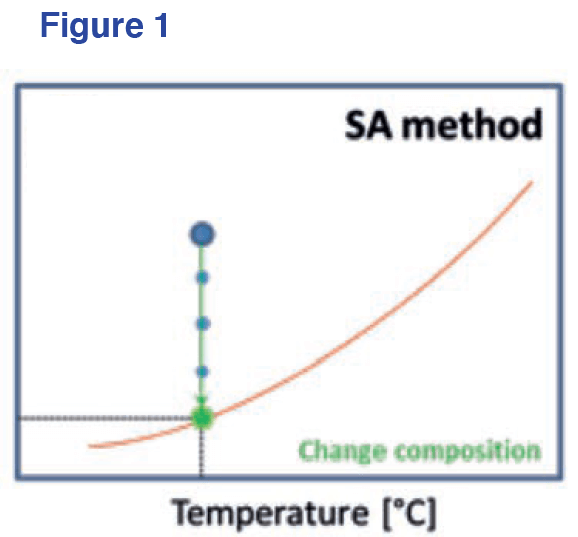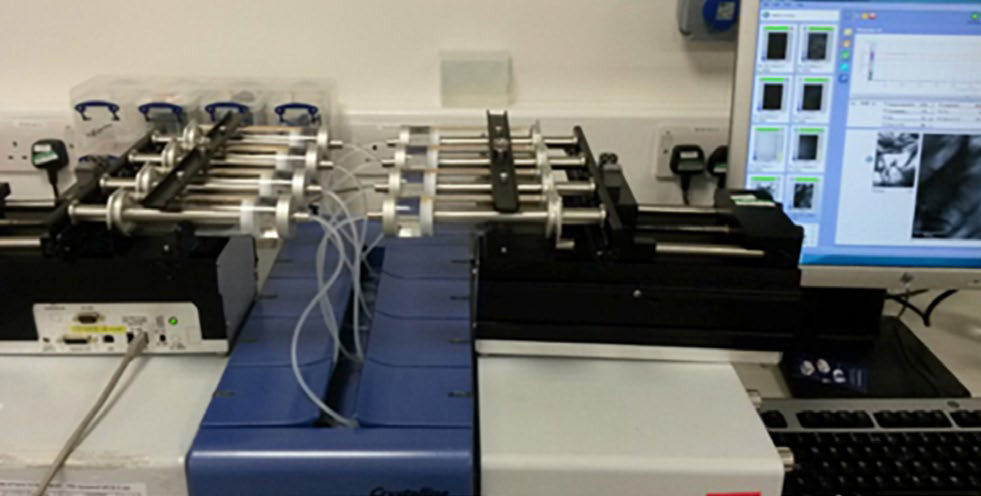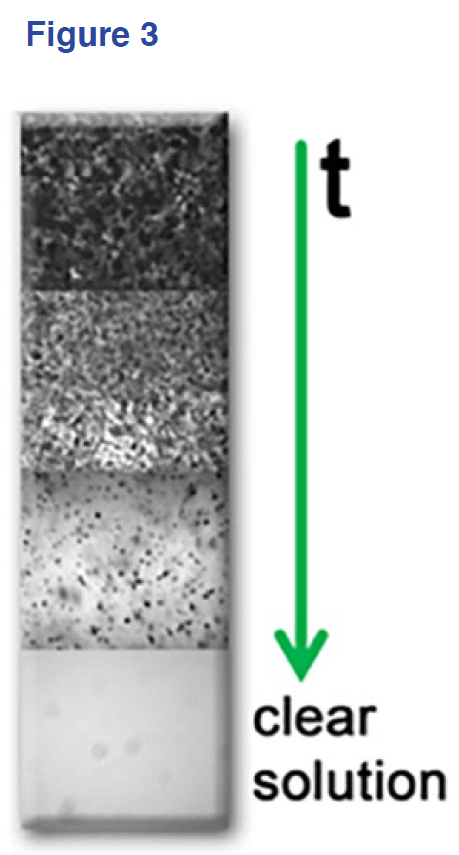The solubility of a compound in organic solvents or water is equally important for screen design and later for process development. For designing a screen, for instance around cooling crystallization, you need to select solvents that have sufficient solubility and that have a high dependency of solubility on temperature. In addition, a selection of solvents and mixtures that spans the range of possible chemical functionalities will maximize the chances of finding new, interesting, and developable solid forms.
Measuring the solubility requires accurate control of temperature and sharp observation of the phase transition, i.e. full dissolution of the solid phase, combined with information regarding the composition of the system. Since generally a reproducible solubility dataset over a temperature or compositional range is required, many data points need to be determined separately. This can be labour intensive and time consuming. Crystal16 and Crystalline instruments offer invaluable tools to automate the execution of solubility measurements in quick, controllable, and reproducible manner.
When solubility data is required at constant temperature, which is often the case in multicomponent mixtures, the Solvent Addition Method (SA) is the method of choice. Additionally, the method is very useful for systems in which the solubility is not strongly dependent on temperature or where the MSZW is wide. However, the MSZW is not measured in this method. In the solvent addition method, the temperature is kept constant. Upon dilution of a suspension of known composition by the addition of solvent, a clear point is detected when the equilibrium concentration is reached.
Figure 1 shows the principle of a Solvent Addition (SA) measurement, in which the crystals in a suspension are dissolved upon dilution. The clear point can be detected by a decrease in solution concentration or by the disappearing of crystals.

The latter is shown in the image, where a Crystalline instrument is used to monitor the suspension by using the particle viewer cameras. The cameras take pictures at regular intervals and the clear point is determined as the first picture without crystals. Therefore, a shorter time between pictures increases the accuracy of the clear point.

The most important parameter in the SA method is the addition rate. It must be chosen low enough for the dissolution to occur in time. Using a too high addition rate yields lower solubility data than the actual one. In the Crystalline, eight measurements may be conducted simultaneously. Solvent is added to the vials over time using the syringe pumps as in the image. The cameras of the Crystalline clearly capture the thinning of the suspension upon the addition of solvent, until no crystals are detected anymore (see Figure 3).
Compared to the equilibrium concentration method, these dynamic methods are beneficial since they are much less labour intensive, much faster and have less risk of human error due to fewer required operations (no sampling or filtration).

Curious to learn more?
Download the whitepaper on "Solubility: Importance, Measure and Applications".